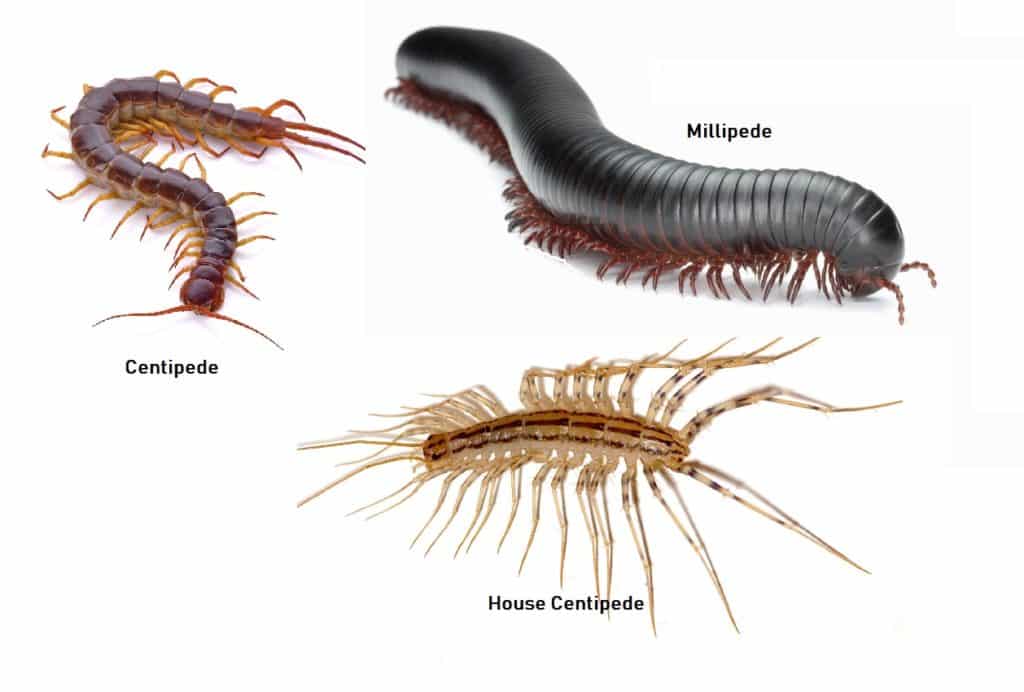
Centipede & Millipede Control Services
While centipedes and millipedes are very beneficial out in the environment, they are certainly one of the creepier pests that can get inside of our homes. There are rarely centipede or millipede infestations, but they are commonly seen in your home a few at a time, often in basements. Instead of worrying about removing the centipedes and millipedes from your home one by one, our pest control service program prevents most issues.
Fact – Millipedes and centipedes are not insects. They are closely related to lobsters, crayfish and shrimp. Consider them the land-dwelling version of those. Millipedes and centipedes do not carry diseases that affect people, plants or animals. They may enter homes in large numbers seasonally and become a considerable nuisance.
Millipedes are not poisonous. Many species have glands capable of producing irritating fluids that may cause allergic reactions in some individuals. All centipede species are worm-like and have a “flattened” body with a distinct head with long antennae. Their jaws contain poison glands are located on the first body segment immediately behind the head. However, centipedes do occasionally bite but it usually only produces a moderate reaction.
The house centipede is the only species capable of reproducing indoors and is often seen in and around homes where dampness occurs. The house centipede is active at night, moving about in search of cockroaches and other insects. With that said, although Centipedes are beneficial by destroying other insects (like Mother Nature’s pest control) most people have an aversion to their presence inside their homes.
Did you know… Millipedes are scavengers and feed primarily on decaying vegetation and leaf litter while centipedes feed on other insects?
Centipede & Millipede Control
Our approach with Centipede & Millipede Control is identical to every pest that we handle.
- We perform a thorough inspection.
- Determine / Confirm the target pest.
- Devise a strategy.
With our entire Pest Control Division, We adhere to an “Integrated Pest Management (IPM)” principle & philosophy which simply means we use a common-sense approach. We take advantage of existing mechanical & environmental controls (habitat modifications, removing attractants, using barriers, traps, etc.) combined with the responsible application of pesticides to eliminate the target pest. It is our goal to remove the pests while taking into consideration human health, non-target beneficial species, and the environment.
Some of these measures are to make sure doors and windows fit tightly and caulk cracks and crevices that permit their entry to the inside. Additional measures could be removing or eliminating trash piles, rocks, stacks of wood, leaf piles, compost piles around the outside of the home.
Call us we can help!
(678)935-5900
